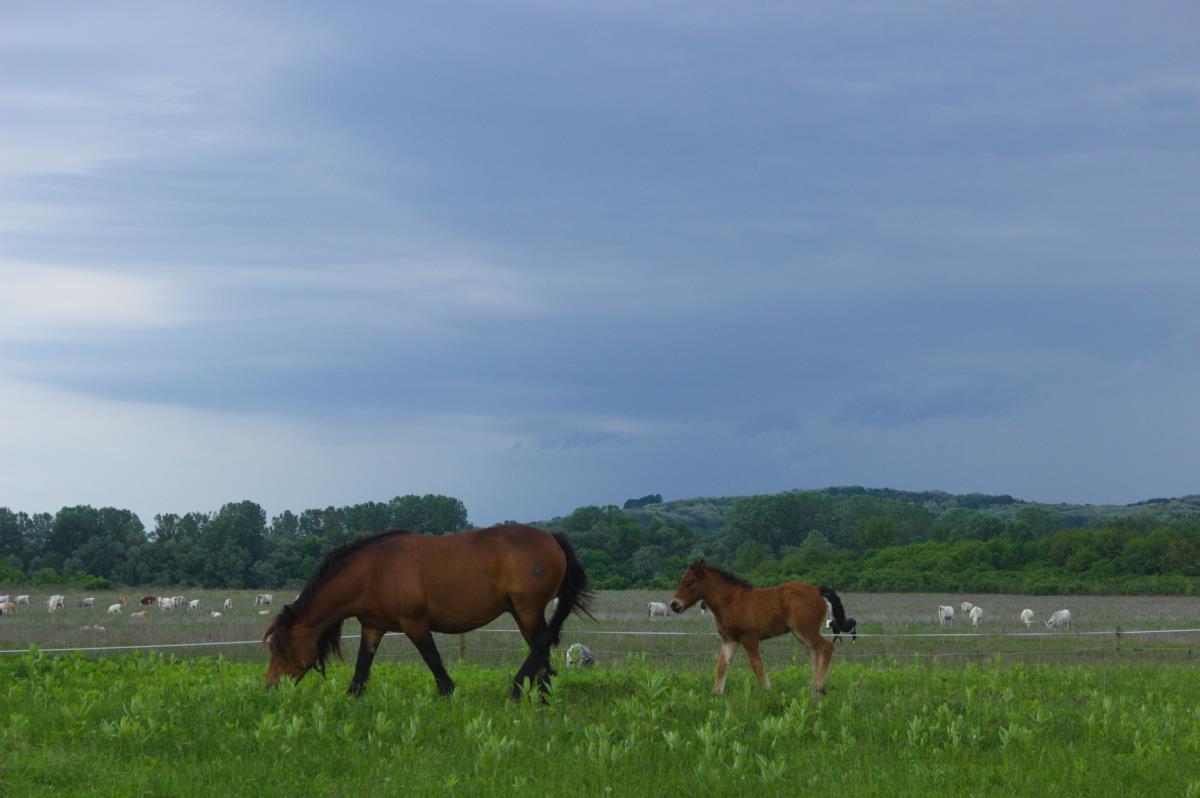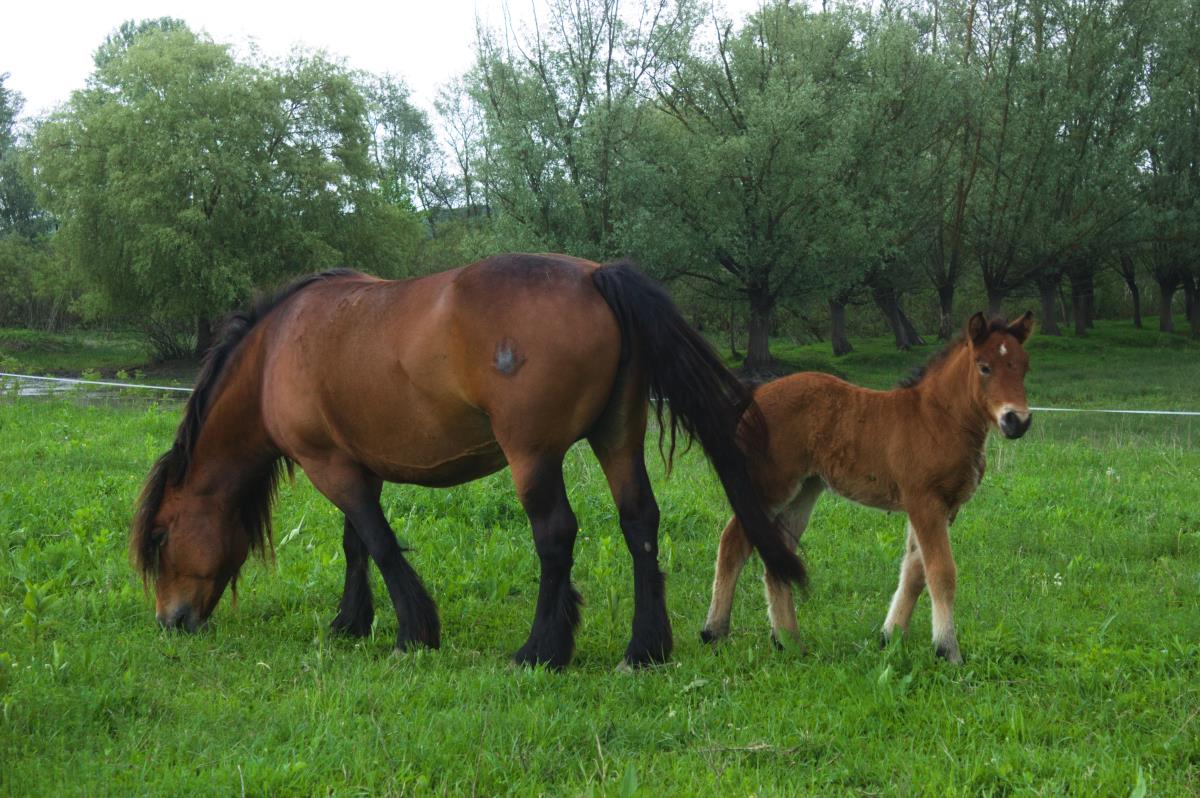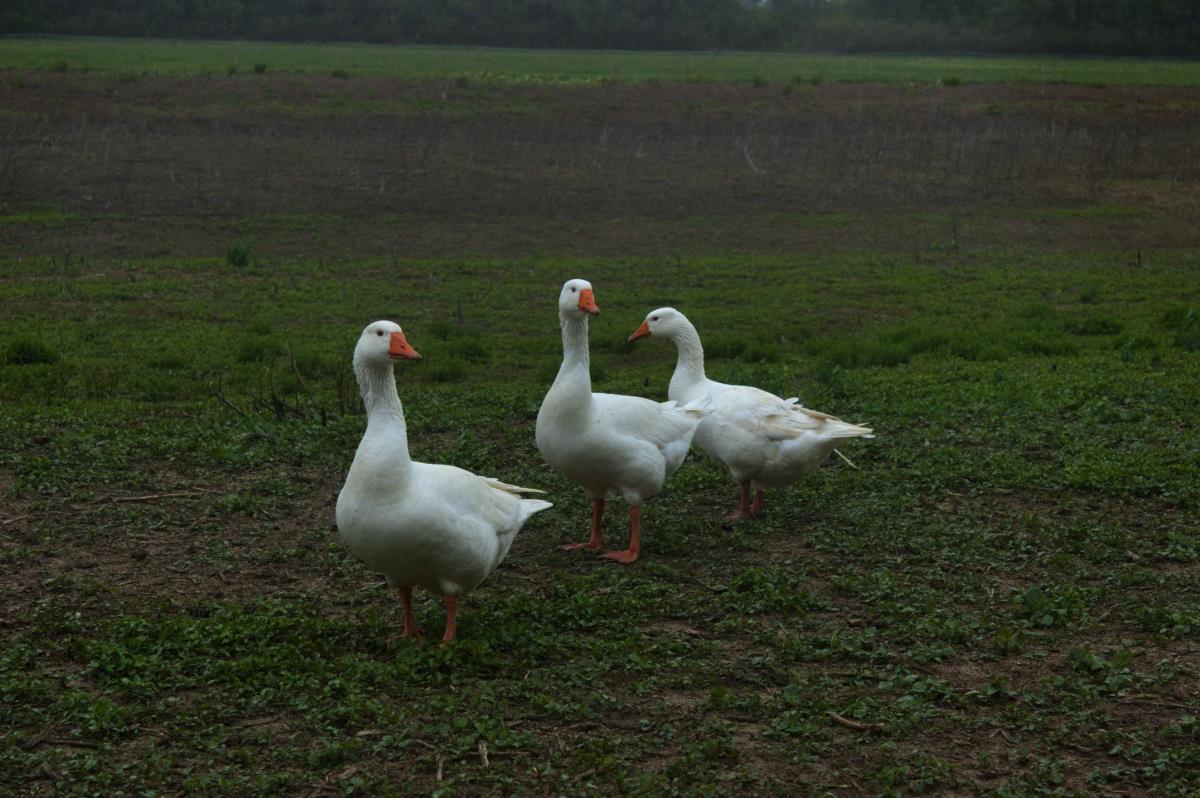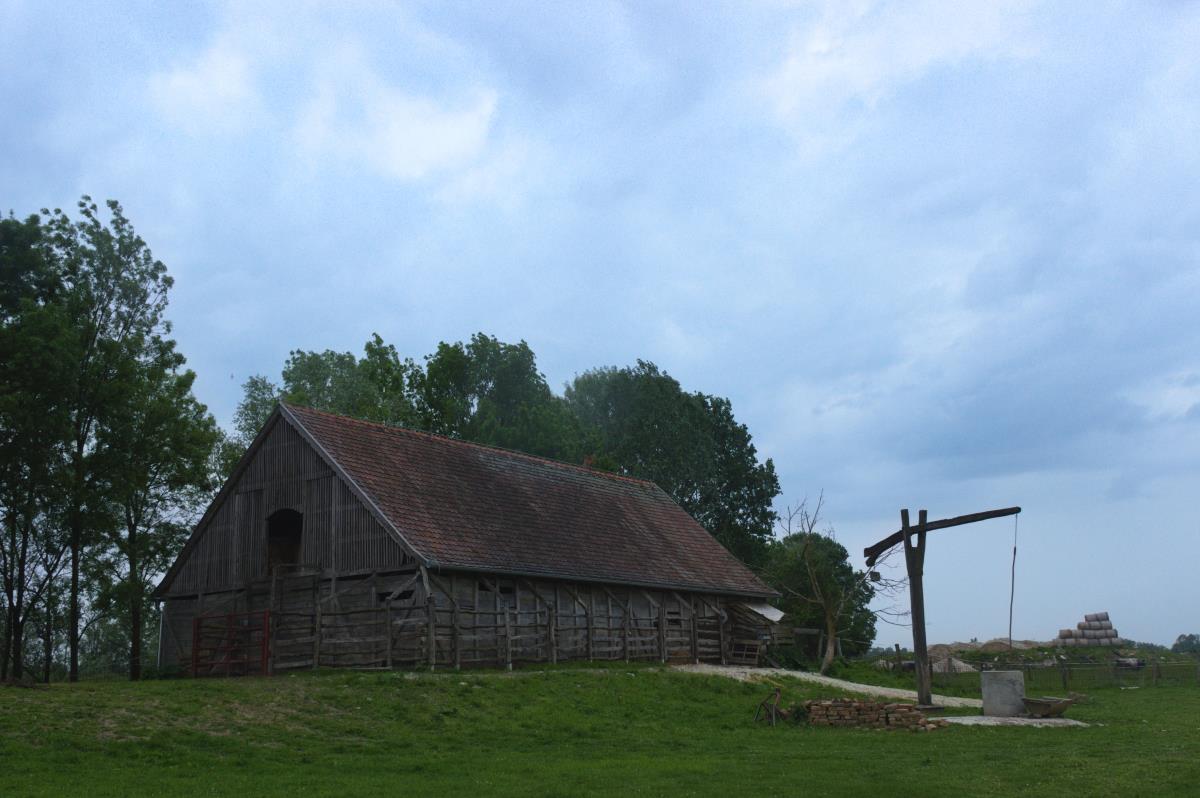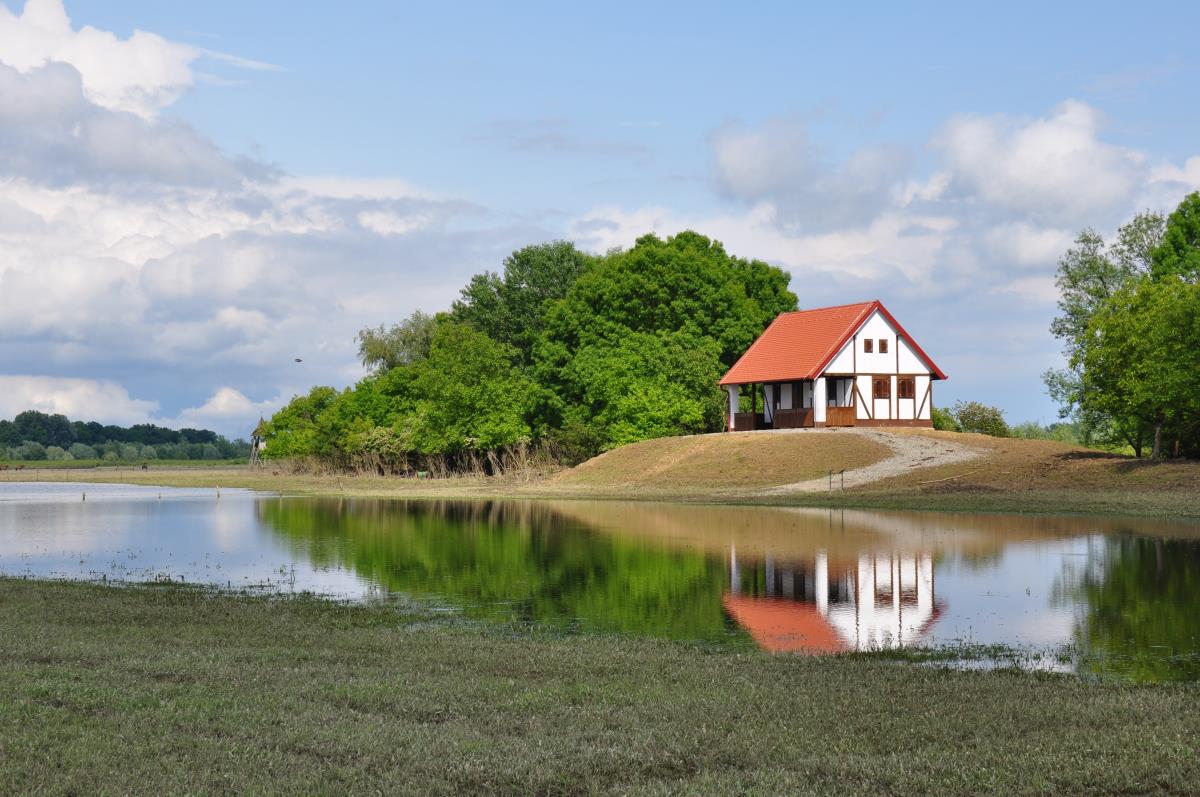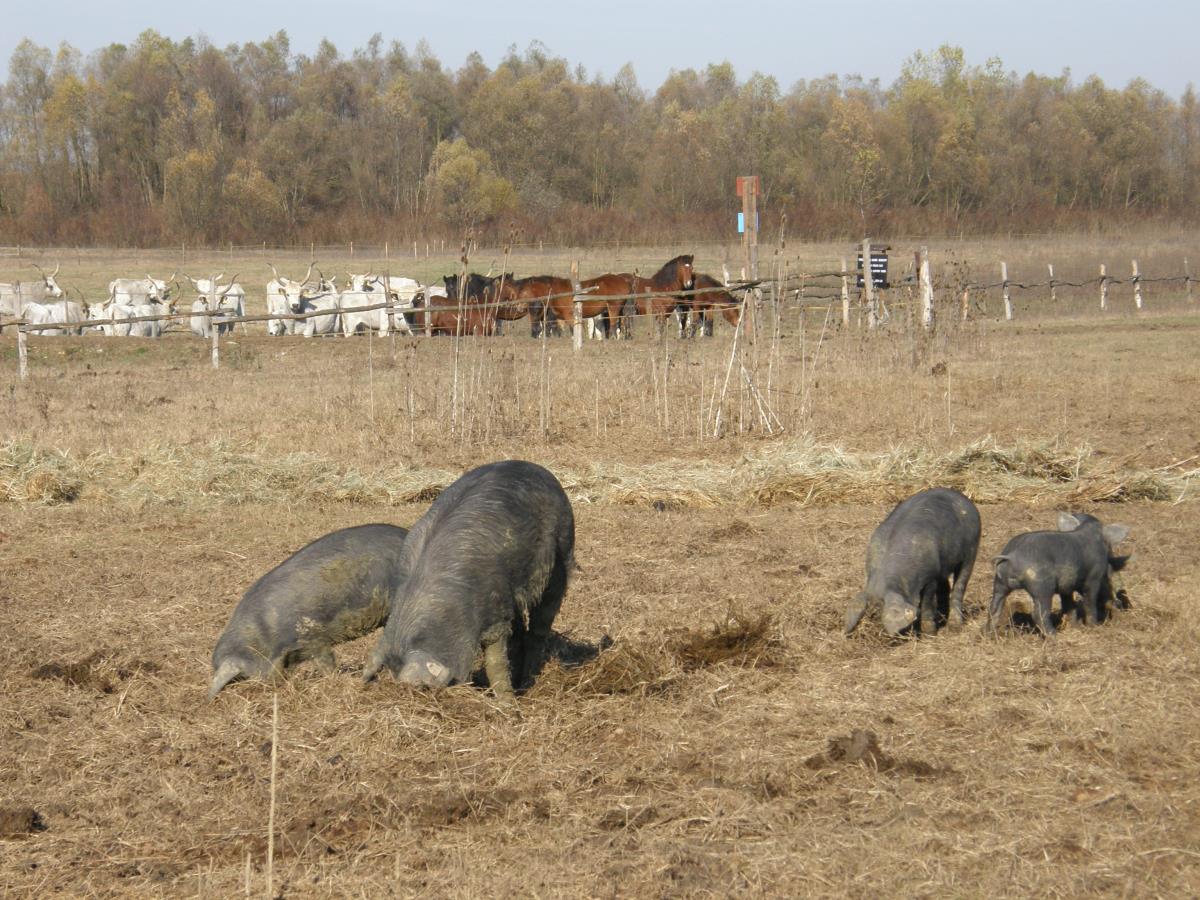GAJNA SIGNIFICANT LANDSCAPE
Official name: Gajna
Protected area categories: Significant landscape
Year of designation: 1990
Location
Outskirts of Oprisavci and Poljanci, 18 km east from Slavonski Brod in Croatia.
History
Gajna is a floodplain pasture along the River Sava in Oprisavci municipality. The land itself used to be a common land used by the settlers of the villages of Oprisavci and Poljanci for cattle grazing. Since 1990, Gajna is categorized as a significant landscape at the initiative of Brod Ecological Society (BED), a local environmental organization from Slavonski Brod which has since been very actively involved in managing this grassland. In close cooperation with BED, this protected area has been managed by Public institution for management of protected parts of nature of Brod-Posavina County - Natura Slavonica since 2004. In 2015, the Public institution, together with the BED organization, established the Gajna Significant Landscape Stakeholders Committee which holds regular annual meetings. The goal of this Committee is to include the local community in grassland management, and to achieve a successful cooperation with the competent authorities and other affiliated institutions (from the scientific, expert and cultural domain) in resolving current issues pertaining to Gajna pasture and its sustainable use. Gajna grassland has been maintained by the grazing livestock owned by the local farmers grouped together under a single grassland association. The pasture keeper is a BED employee, but his salary is co-financed by the Public institution. His job is to take care of the grazing livestock, to do infrastructure maintenance (primarily the electric shepherd) and to supervise the whole area. Since 2013, Gajna is a part of Natura 2000 network.
Tourism
Visitors to Gajna are few, but nevertheless it is the most well-known protected area in Brod-Posavina County. Cyclists taking the so called “Sava route” (Ruta Sava) are among the more frequent visitors, in addition to groups of experts or researchers,as well as local community, for example students from local schools who come for organized field trips. The most attractive sites are Gajna educational trail, an observation platform in the form of the so called “čardak”, a military watchtower from the time of the Military frontier (“Krajina”), visitor centre “Stan na Gajni” designed in the style of the traditional “stan”, and a number of native breeds of domestic animals that normally graze the Gajna pasture.
One should bear in mind that this is an area which is flooded by the River Sava on regular basis, so visits are possible when these natural circumstances allow it. Floods in the Sava basin are quite unpredictable, and most frequently occur at Gajna, specifically in the period between November and April. Visitors should expect trails to be muddy and choose their footwear accordingly. Since a considerable number of domestic animals is grazing the Gajna pasture, for safety reasons and in order to prevent disturbance to the animals, Natura Slavonica public institution or the BED organization must be informed in advance so your visit could be scheduled.
One should bear in mind that this is an area which is flooded by the River Sava on regular basis, so visits are possible when these natural circumstances allow it. Floods in the Sava basin are quite unpredictable, and most frequently occur at Gajna, specifically in the period between November and April. Visitors should expect trails to be muddy and choose their footwear accordingly. Since a considerable number of domestic animals is grazing the Gajna pasture, for safety reasons and in order to prevent disturbance to the animals, Natura Slavonica public institution or the BED organization must be informed in advance so your visit could be scheduled.
Natural values
The area covers around 330 ha of pasture land and ponds (depressions) which are regularly flooded by the River Sava. Gajna is a typical example of a pasture commonly found along the Sava; what makes it significant as a landscape is the wetland flora and fauna that can be found there. On its south side, Gajna is bordered by the River Sava, for some 2,5 km, while on its north side it is enclosed by the 5 km-long semicircle of the Sava river embankment. The west side of this semicircle is traversed by a lateral canal between the villages of Oprisavci and Poljanci. The lateral channel collects the water coming from the Dilj hills, from Bukovačko brdo, a hill near Slavonski Brod, to the eastern Dilj hills near Đakovo and delivers it directly to the Sava. As a result, the local waters here do not overwhelm the Biđ basin, which, running parallel with the Sava, carries only the waters of the lowland streams. The lateral canal cuts through Gajna in the north-south direction. Its portion located 1 km away from its entry into the Sava includes a particular mechanism which is installed to ensure adequate water level in Gajna ponds during drought season, and interconnect the depressions. This is a significant contribution to the preservation of the biodiversity in the habitat. Gajna is not formed as a flatland; as any floodplain, it encompasses several depressions, remnants of what used to be ponds, and higher points known as elevated spots. The most well known depressions are: Zatoka, Šarajna and Velika Gajna. The most noteworthy elevated spots are: Greda, Sinjak, VelikaGreda, Jabučice and Bajer, located along the entire length of the Sava.
Plant life is the aspect of Gajna which has been studied most extensively. Over 200 plant species have been registered, and their most important habitats are 3150 Natural eutrophic waters where Hydrocharition or Magnopotamion vegetation occurs, and 3130 Amphibian habitats of species from theIsoeto-Nanojuncetea class. These are in fact the target Natura areas on account of which the whole area earned its status as an area whose preservation is vital for the species and the habitat types. One peculiarity worth noting is a type of fern better known as the four leaf clover (Marsilea quadrifolia), found in the ponds and next to grassland ponds, as well as in one part of the lateral canal running through Gajna. This is also one of the target Natura species in this area. Like other floodplains along the River Sava, Gajna is home to some invasive non-indigenous species. The biggest problem presents Amorpha fruticosa, a flowering plant from the legume family. The most effective method of its eradication is grazing, especially cattle grazing since bovines feed on and walk over it.
Flood season in Gajna is also the spawning period for the fish in its shallows. As the water retreats, the fry moves back to the Sava and in this way replenishes its fish stocks. One part of the fry remains in the grassland ponds and provides nourishment for birds and other animals who feed on them. The ponds are spawning zones for amphibians. One notable frog species which is quite abundant there is the European fire-bellied toad (Bombina bombina). Gajna is part of the Jelas field (Jelaspolje - HR1000005), a preservation area which was granted this status on account of its significance for the bird population there. It is home to quite a large number of water birds, typical species found in agricultural areas, and the bird species which nest in the nearby forests. Gajna is also a stopping point for larger flocks of white (Ciconia ciconia) and black storks (Ciconia nigra) in migration. In addition to storks, swallows are another common sight on the pasture (Hirundo rustica), as well as the northern lapwing (Vanellus vanellus), the whiskered tern (Chlidonias hybrida), the common stonechat (Saxicola torquata), the red-backed shrike (Lanius collurio), the little egret (Egretta garzetta), the great heron (Ardea alba), the grey heron (Ardea cinerea), the Eurasian sparrowhawk (Accipiter nisus), the northern goshawk (Accipiter gentilis), the common buzzard (Buteo buteo) etc. The ponds also serve as feeding and nesting spots for various species of ducks.
Plant life is the aspect of Gajna which has been studied most extensively. Over 200 plant species have been registered, and their most important habitats are 3150 Natural eutrophic waters where Hydrocharition or Magnopotamion vegetation occurs, and 3130 Amphibian habitats of species from theIsoeto-Nanojuncetea class. These are in fact the target Natura areas on account of which the whole area earned its status as an area whose preservation is vital for the species and the habitat types. One peculiarity worth noting is a type of fern better known as the four leaf clover (Marsilea quadrifolia), found in the ponds and next to grassland ponds, as well as in one part of the lateral canal running through Gajna. This is also one of the target Natura species in this area. Like other floodplains along the River Sava, Gajna is home to some invasive non-indigenous species. The biggest problem presents Amorpha fruticosa, a flowering plant from the legume family. The most effective method of its eradication is grazing, especially cattle grazing since bovines feed on and walk over it.
Flood season in Gajna is also the spawning period for the fish in its shallows. As the water retreats, the fry moves back to the Sava and in this way replenishes its fish stocks. One part of the fry remains in the grassland ponds and provides nourishment for birds and other animals who feed on them. The ponds are spawning zones for amphibians. One notable frog species which is quite abundant there is the European fire-bellied toad (Bombina bombina). Gajna is part of the Jelas field (Jelaspolje - HR1000005), a preservation area which was granted this status on account of its significance for the bird population there. It is home to quite a large number of water birds, typical species found in agricultural areas, and the bird species which nest in the nearby forests. Gajna is also a stopping point for larger flocks of white (Ciconia ciconia) and black storks (Ciconia nigra) in migration. In addition to storks, swallows are another common sight on the pasture (Hirundo rustica), as well as the northern lapwing (Vanellus vanellus), the whiskered tern (Chlidonias hybrida), the common stonechat (Saxicola torquata), the red-backed shrike (Lanius collurio), the little egret (Egretta garzetta), the great heron (Ardea alba), the grey heron (Ardea cinerea), the Eurasian sparrowhawk (Accipiter nisus), the northern goshawk (Accipiter gentilis), the common buzzard (Buteo buteo) etc. The ponds also serve as feeding and nesting spots for various species of ducks.
Sights
Gajna has quite a lot to offer to its visitors. The biggest attraction are the native breeds of domestic animals grazing the pasture: the Slavonian-Syrmian Podolian cattle, the Posavina horse, the Tsigai sheep, the Black Slavonian pig, the Turopolje pig, and the Croatian sheepdog. Visitors can also decide to take the educational trail which includes 10 information points providing details on natural and cultural treasures of Gajna. Another venue that visitors find interesting is the observation platform built by the BED organization. It is designed to be a replica of the watchtower from the period of Military Frontier (“Krajina”) known as “čardak”. The Gajna visitors’ centre was built in 2013. The design was inspired by the traditional Slavonian “stan”, the term used to describe privately owned properties built in the field outside the village, which typically included a house, and adjacent farm outbuildings. These properties sometimes served as permanent dwellings, but sometimes shepherds used them during warmer seasons when the cattle were moved from their barns into the pasture. The centre and the educational trail were set up as a part of EU Natura 2000 Integration Project- NIP, whose project holder was the ministry responsible for nature protection, and the beneficiary is the Public institution in partnership with BED. The project is financed by funds acquired through the loan granted by the World Bank.
Known about the unknown
There was an interesting finding in the Poljanci repository located in the vicinity of this protected area - a copper pendant in the shape of the bull, the oldest representation of this animal found in northern Croatia (11th or 12th century BC).
The area is open for visitors, please contact us to schedule your visit
- Opening hours: by appointment only
- Scheduling your appointment: to schedule a group visit, please call 035 409 043 or 035 409 042, or send an email, or go to: http://www.natura-slavonica.hr/hr/zasticena-podrucja1/najava-grupnog-posjeta.html
Additional information:
Visits are not possible during the flood season. Mud is a common occurrence on a floodplain so footware should be chosen accordingly. Considering the significant number of animals grazing the Gajna pasture, and in order to ensure not only the safety of our visitors, but also to prevent disturbing the animals, visits must be scheduled using the above-mentioned phone numbers, or by contact form.
